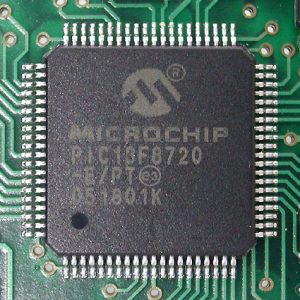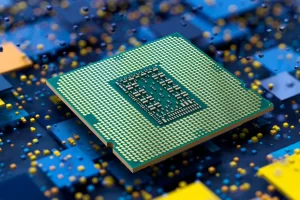
Microcontrollers: The Key to Space Exploration and Beyond
August 03 2023  974
974
Inquiry
Global electronic component supplier Ampheo Electronics: Rich inventory for one-stop shopping. Inquire easily, and receive fast, customized solutions and quotes.
QUICK RFQ
ADD TO RFQ LIST
This article is going to make a detailed introduction about Microcontrollers including what it means, basic elements of Microcontrollers, the role of microcontrollers in space exploration, some tips for choosing the right microcontroller, and so on.
What is a Microcontroller?
Microcontrollers are small, self-contained computers that are used to control the functions of embedded systems. They are found in a wide variety of devices, including office machines, robots, home appliances, motor vehicles, and other gadgets. In recent years, microcontrollers have become increasingly important in space exploration, as they are used to power and control CubeSats, small satellites that are used for scientific research and education.
Microcontrollers Components
- A processor: This is the central processing unit of the microcontroller. It is responsible for executing instructions and controlling the other components of the microcontroller.

- Memory: Microcontrollers typically have some form of memory, such as ROM (read-only memory) or RAM (random-access memory). ROM stores the microcontroller's firmware, which is the software that controls the microcontroller's operation. RAM is used to store data that is being processed by the microcontroller.
- Peripherals: Microcontrollers typically have a variety of peripherals, such as input/output ports, timers, and communication interfaces. These peripherals allow the microcontroller to interact with the outside world.
Microcontrollers Features
- General purpose input/output pins (GPIO): These pins can be configured as inputs or outputs, and can be used to read sensors or external signals, or to drive external devices such as LEDs or motors.
- Analog-to-digital converter (ADC): This converts analog signals into digital data that the processor can understand.
- Digital-to-analog converter (DAC): This converts digital data into analog signals that can be output by the processor.
- Programmable interval timers (PIT): These timers can be used to generate interrupts at regular intervals.
- Pulse-width modulation (PWM): This can be used to control power converters, resistive loads, and motors.
- Universal asynchronous receiver/transmitter (UART): This can be used to receive and transmit data over a serial line.
- Inter-Integrated Circuit (I²C): This is a digital communication protocol that can be used to communicate with other devices on the same board.
- Serial Peripheral Interface (SPI): This is another digital communication protocol that can be used to communicate with other devices on the same board.
- Universal Serial Bus (USB): This is a popular communication protocol that can be used to connect devices to a computer.
- Ethernet: This is a networking protocol that can be used to connect devices to a local area network (LAN).
How Does Microcontroller Work?
- Fetching instructions: The CPU fetches instructions from program memory one at a time. The instructions are stored in a sequence of bytes, and the CPU reads each byte in turn.
- Decoding instructions: The CPU decodes the instructions it has fetched. This involves converting the bytes into instructions that the CPU can understand.
- Executing instructions: The CPU executes the instructions it has decoded. This involves carrying out the actions specified by the instructions.
- Accessing memory: The CPU may need to access memory to read data or to write data. The CPU has a set of instructions that it can use to access memory.
- Accessing I/O peripherals: The CPU may also need to access I/O peripherals. I/O peripherals are devices that allow the microcontroller to interact with the outside world. The CPU has a set of instructions that it can use to access I/O peripherals.
- Generating output: The CPU may need to generate output to I/O peripherals. This output can be used to control devices or to send data to other devices.
Video Related to Microcontrollers
Microcontrollers Applications in space exploration
Microcontrollers are used in space exploration for a variety of reasons. They are small and lightweight, making them ideal for use in CubeSats. They are also very reliable, and they can withstand the harsh conditions of space, such as radiation and extreme temperatures. One of the most important applications of microcontrollers in space exploration is for attitude control. Attitude control is the process of keeping a spacecraft oriented in the correct direction. Microcontrollers are used to control the thrusters that are used to change the orientation of a spacecraft. Microcontrollers are also used to control the various sensors that are used on spacecraft. These sensors can measure things like temperature, pressure, and radiation levels. The data from these sensors is used to monitor the health of the spacecraft and to make sure that it is operating properly.Challenges of Using Microcontrollers in Space
There are a number of challenges that engineers face when designing and using microcontrollers in space. One challenge is the harsh environment of space, as we mentioned before. Microcontrollers must be able to withstand radiation, extreme temperatures, and other environmental hazards. Another challenge is the limited power supply available on spacecraft. Microcontrollers must be designed to be very power-efficient. Finally, engineers must also consider the limited bandwidth available on spacecraft, which means that microcontrollers must be able to communicate with the ground station in a very efficient way.Tips for Choosing the Right Microcontroller for Space Projects
When choosing a microcontroller for a space project, there are a number of factors that you need to consider. These factors include the size, weight, power consumption, and radiation tolerance of the microcontroller. You also need to consider the type of sensors that you will be using on your spacecraft and the software that you will be running on the microcontroller.Conclusion
Microcontrollers are an essential part of space exploration. They are used to control spacecraft, monitor their health, and collect data. Engineers face a number of challenges when designing and using microcontrollers in space, but the benefits of using microcontrollers far outweigh the challenges.Populer Posts
